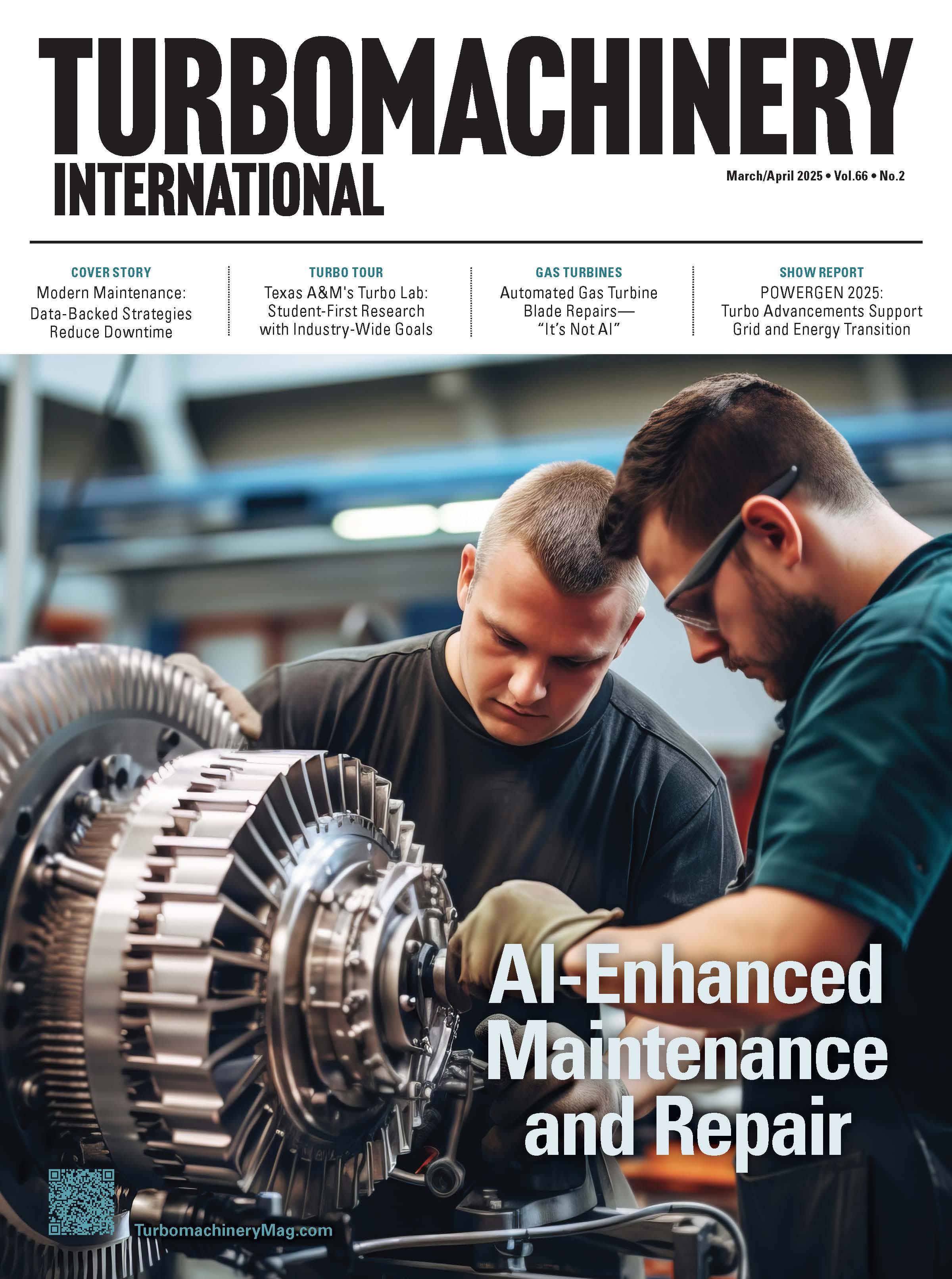Upgrading and Renovating Turbocompressor Dry Gas Seals
Renovating modern dry gas seals and their systems increases reliability.
Modern-day turbocompressors use dry gas seals, not oil seals. A tandem dry gas seal arrangement with an intermediate labyrinth is the most popular. The sealing panel, piping arrangements, and vent system details are critical to the operation and reliability of turbocompressor dry gas seals.
TRANSIENT CONDITIONS: USUAL FORGOTTEN CASES
Any transient conditions of the turbocompressor can reduce the reliability of a dry gas seal. During start-ups, shutdowns, idle at low speeds, pressurized stops, or other transient situations, dry gas seals lose the capacity to develop the pressure force that keeps the narrow gap between seal faces. The composition of the seal gas, its cleanness, the presence of liquid/ particles at the operating range, and all compressor operation variations (which can change the seal gas specification or flow) should be carefully investigated. All of these factors are important for a reliable dry gas seal system.
UPGRADING & RENOVATION
Upgrading and renovating dry gas seal systems has been a common improvement step for turbocompressors. Two upgrade options are often discussed for dry gas seal systems:
- Seal gas filter system: Original (manufacturer standard) filters are usually small in capacity and large in mesh size. In most cases, new filters should be used, usually 2 - 5 times larger (in capacity) and 3 - 8 times smaller in mesh size.
- Operation range of seal system instruments: Seal panels are complex systems with different instrumentations, controls, and devices. Some instruments might not have been selected properly in the original designs, and sometimes, the instrument range is insufficient. Seal system flowmeters are often not sized properly.
In a case study for a natural gas turbocompressor in a chemical processing unit, the original seal filter meshing was 4 microns, which was insufficient. The upgraded seal filter was 1 micron (mesh size) and six times bigger than the original filter.
The oil or liquid carryover from the upstream can generally be a problem for the seal gas system. Compressors in the upstream, whether oil-flooded screw compressors, oil-lubricated reciprocating compressors, or old-fashion oil-sealed turbocompressors, can usually inject some oil into the gas flow and create problems for the dry gas seals downstream.
GENERIC VS STANDARD SEAL PANELS
Turbocompressor manufacturers usually use generic (or standard) seal panels. Emergency and abnormal operational cases are sometimes neglected, which mandate special features and can add to the cost. All these transient situations should be considered during the bidding stage, and necessary provisions such as a better filter set and control and better instruments/sensors should be included. However, if not properly done, a renovation plan should be prepared and implemented as soon as possible. For example, an intermediate labyrinth purged with nitrogen (to eliminate fugitive emissions) is recommended. This is a good provision for any dry gas seal.
Tandem dry-gas-seal is one of the common seal systems in modern turbocompressors. The primary vent is between the two seals, usually connected to the flare system. The back pressure is significant, and the seal should not be subjected to a reverse pressure condition, as this can cause premature failure. High pressure in the primary vent line usually indicates the failure of the primary seal stage. Low pressure in the primary vent line too often indicates problems with the secondary seal stage. A minimum positive differential pressure is required for the secondary seal to function satisfactorily. Therefore, the primary vent pressure should be carefully controlled.
SEAL GAS BOOSTER COMPRESSORS
Seal gas supply systems usually draw gas from a higher-pressure stage during operation, filter it, and use it to flush the seal. Approximately 75% of primary seal failures in complex gas services (such as contaminated, corrosive, or sour gases) are caused by the seal not being protected from the gas inside the compressor by the clean seal gas with proper pressure and conditions. Typically, this happens in transient periods such as start-up or shutdown. When a reliable gas seal source is unavailable, the required seal gas should be supplied from an alternative source. One of the solutions is a gas seal booster compressor. Generally, there is a need for advanced seal gas booster compressors in many services. These small compressors should be compact, reliable, oil-free, robust, and rugged, capable of providing a relatively small amount of seal gas with relatively high pressures and a reasonable commercial condition (cost and delivery time). Traditionally, oil-free positive displacement compressors, such as small oil-free reciprocating compressors, have been used.
Pneumatically driven positive-displacement compressor systems have been used for years. However, such traditional positive-displacement compressor boosters are often available. In particular, reciprocating compressors have a relatively low service life and wear down fast. Old-fashioned seal gas compressor boosters have been around for a long time, but some operators reported they create more problems than they solve.
Modern seal gas boosters are based on high-speed multistage centrifugal compressor technology. They play a crucial role in today’s dry gas seal industry. An advanced and reliable multi-stage centrifugal compressor booster can ensure continuous operation with zero leakage and no oil contamination. This is a nearly perfect solution for modern seal gas systems. Generally, these modern options offer a small footprint, a low power requirement, and a simple connection to the seal system. Modern seal gas centrifugal compressor boosters are usually electric motor direct-driven, high-speed, fully stainless-steel compressors without seal or oil lubrication systems. These turbomachines are usually robust and maintenance-free, with no wear-sensitive components. Vertical direct-driven models have become popular because of the compact package concept, with the electric motor driver is on top.
About the Author
Amin Almasi is a Chartered Professional Engineer in Australia and the U.K. He is a senior consultant specializing in rotating equipment, condition monitoring, and reliability.
